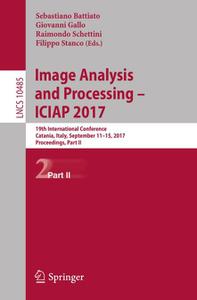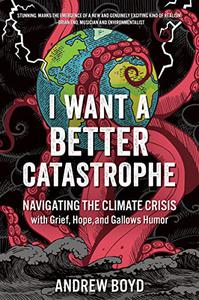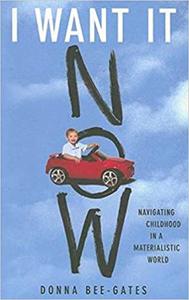- Книги
- 16-02-2023, 09:46
- 113
- 0
- voska89

Image Analysis and Processing - ICIAP 2017: 19th International Conference, Catania, Italy, September 11-15, 2017, Proceedings, Part II By Sebastiano Battiato, Giovanni Gallo, Raimondo Schettini, Filippo Stanco
English | PDF | 2017 | 814 Pages | ISBN : 3319685473 | 101.7 MB
The two-volume set LNCS 10484 and 10485 constitutes the refereed proceedings of the 19th International Conference on Image Analysis and Processing, ICIAP 2017, held in Catania, Italy, in September 2017.
Полная новость
Полная новость
- Книги
- 16-02-2023, 09:45
- 118
- 0
- voska89

Ideology, Power, Text: Self-Representation and the Peasant 'Other' in Modern Chinese Literature By Yi-tsi Feuerwerker
1998 | 336 Pages | ISBN: 0804733198 | PDF | 17 MB
The division between the scholar-gentry class and the "people" was an enduring theme of the traditional Chinese agrarian-bureaucratic state. Twentieth-century elites recast this as a division between intellectuals and peasants and made the confrontation between the writing/intellectual self and the peasant "other" a central concern of literature. The author argues that, in the process, they created the "peasantry," the downtrodden rural masses represented as proper objects of political action and shifting ideological agendas.Throughout this transition, language or discourse has been not only a weapon of struggle but the center of controversy and contention. Because of this primacy of language, the author's main approach is the close reading or, rather, re-reading of significant narrative fictions from four literary generations to demonstrate how historical, ideological, and cultural issues are absorbed, articulated, and debated within the text.Three chapters each focus on one representative author. The fiction of Lu Xun (1881-1936), which initiated the literary preoccupation with the victimized peasant, is also about the identity crisis of the intellectual. Zhao Shuli (1906-1970), upheld by the Communist Party as a model "peasant writer," tragically exemplifies in his career the inherent contradictions of such an assigned role. In the post-Mao era, Gao Xiaosheng (1928-) uses the ironic play of language to present a more ambiguous peasant while deflating intellectual pretensions. The chapter on the last of the four "generations" examines several texts by Mo Yan (1956-), Han Shaogong (1952-), and Wang Anyi (1954-) as examples of "root-searching" fiction from the mid-1980's. While reaching back into the past, this fiction is paradoxically also experimental in technique: the encounter with the peasant leads to questions about the self-construction of the intellectual and the nature of narrative representation itself.Throughout, the focus is on texts in which some sort of representation or stand-in of the writer/intellectual self is present-as character, as witness, as center of consciousness, or as first-person or obtrusive narrator. Each story catches the writer in a self-reflective mode, the confrontation with the peasant "other" providing a theater for acting out varying dramas of identity, power, ideology, political engagement, and self-representation.
Полная новость
Полная новость
- Книги
- 16-02-2023, 09:44
- 125
- 0
- voska89

I Want a Better Catastrophe
by Andrew Boyd
English | 2023 | ISBN: 0865719837 | 417 pages | True EPUB | 22.13 MB
Полная новость
Download
[center]
Полная новость
- Книги
- 16-02-2023, 09:43
- 130
- 0
- voska89

Donna Bee-Gates, "I Want It Now"
English | ISBN: 0230602533 | 2007 | 256 pages | EPUB | 365 KB
In today's world of mega-stores and shop-til-you-drop mentality, people are spending more money than ever in an attempt to find fulfillment in their lives-and children are no exception. In fact, children and teens spend billions of dollars a year on clothes, entertainment, and fast food. In I Want It Now, parents are given the framework to understand how this culture of instant gratification influences their own and their children's spending habits. Bee-Gates discusses how using material goods as rewards or as emotional compensation affects young people's social and psychological development and the ways in which parents can counter materialism by fostering a strong self-concept, concern for others, and a sense of life's purpose in their children.
Полная новость
Полная новость
- Книги
- 16-02-2023, 09:41
- 142
- 0
- voska89

Human Evolution: A Neuropsychological Perspective By John L Bradshaw
1997 | 235 Pages | ISBN: 0863775047 | PDF | 5 MB
The last decade has seen an explosive burst of new information about human origins and our evolutionary status with respect to other species. We have long been considered unique as upright, bipedal creatures endowed with language, the ability to use tools, to think and introspect. We now know that other creatures may be more or less capable of similar behaviour, and that these human capacities in many cases have long evolutionary trajectories. Our information about such matters comes from a diverse variety of disciplines, including experimental and neuropsychology, primatology, ethology, archaeology, palaeontology, comparative linguistics and molecular biology. It is the interdisciplinary nature of the newly-emerging information which bears upon one of the profoundest scientific human questions - our origin and place in the animal kingdom, whether unique or otherwise - which makes the general topic so fascinating to layperson, student, and expert alike. The book attempts to integrate across a wide range of disciplines an evolutionary view of human psychology, with particular reference to language, praxis and aesthetics. A chapter on evolution, from the appearance of life to the earliest mammals, is followed by one which examines the appearance of primates, hominids and the advent of bipedalism. There follows a more detailed account of the various species of Homo, the morphology and origin of modern H. sapiens sapiens as seen from the archaeological/palaeontological and molecular-biological perspectives. The origins of art and an aesthetic sense in the Acheulian and Mousterian through to the Upper Palaeolithic are seen in the context of the psychology of art. Two chapters on language address its nature and realization centrally and peripherally, the prehistory and neuropsychology of speech, and evidence for speech and/or language in our hominid ancestors. A chapter on tool use and praxis examines such behaviour in other species, primate and non-primate, the neurology of praxis and its possible relation to language. Encephalization and the growth of the brain, phylogenetically and ontogenetically, and its relationship to intellectual capacity leads on finally to a consideration of intelligence, social intelligence, consciousness and self awareness. A final chapter reviews the issues covered. The book, of around 70.000 words of text, includes over 500 references over half of which date from 1994 or later.
Полная новость
Полная новость




